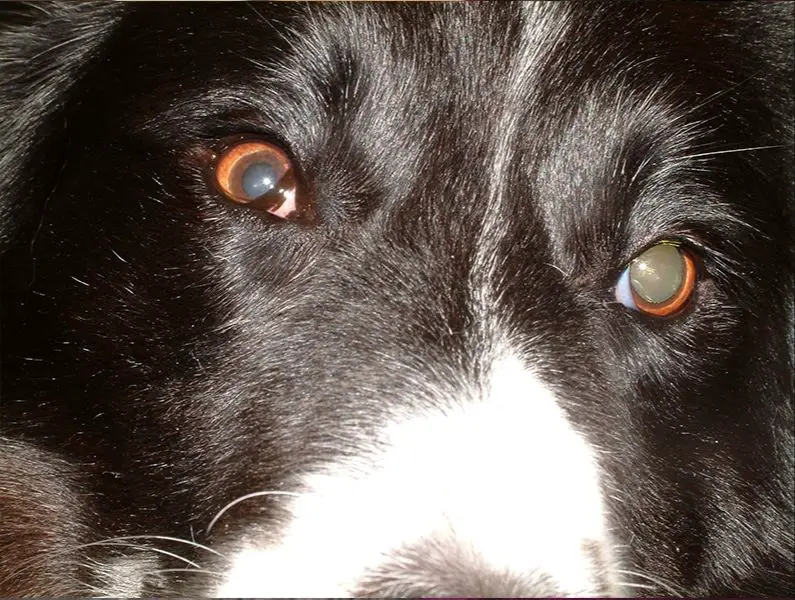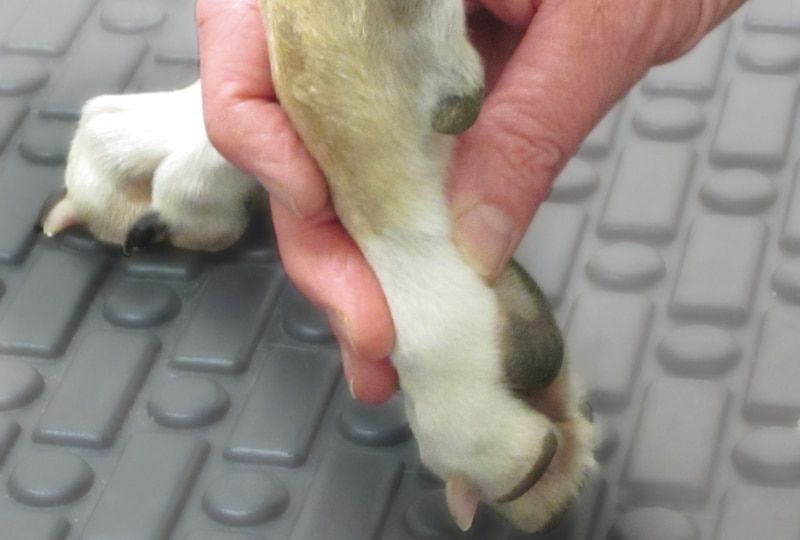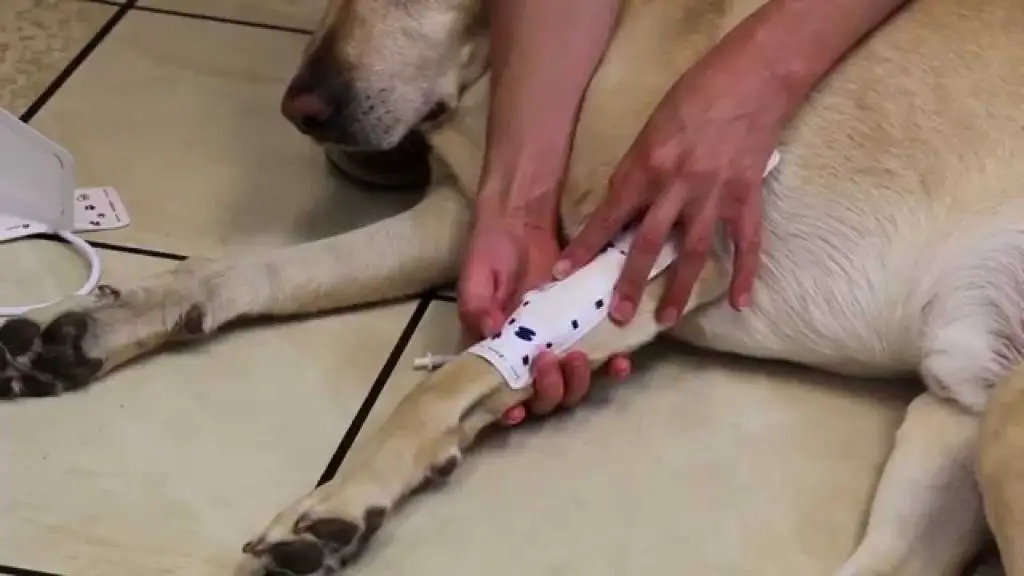Introduction
Vestibular disease, also known as old dog vestibular syndrome, is a condition affecting the nerves in a dog’s inner ear. It results in dizziness, loss of balance, and other disorienting symptoms. The symptoms come on very suddenly and can look like a stroke. However, vestibular disease is not the same as a stroke.
The key difference between vestibular disease and a stroke is what part of the body is affected. Vestibular disease only affects the inner ear and parts of the brain related to balance and spatial orientation. A stroke affects the brain itself and can impact a wider range of functions like cognition, sensation, and mobility on one side of the body.
While the symptoms of vestibular disease can be frightening, the condition usually resolves on its own as the nerves in the inner ear heal. With proper treatment and time, most dogs fully recover their balance and coordination. A stroke has more variable outcomes depending on the severity and location of the damage in the brain.
Causes of Vestibular Disease

Vestibular disease in dogs can be caused by several underlying conditions that affect the inner ear and brain function. Some of the main causes include:
Inner ear infection – Infections in the ear, especially the inner ear, are a common cause of vestibular disease in dogs. These infections, such as otitis media or interna, can disrupt the vestibular apparatus in the inner ear which is responsible for balance and coordination.
Inflammation of the vestibular system – The vestibular system includes the parts of the inner ear and brain that control balance and spatial navigation. Inflammation of these structures, known as vestibular neuritis, can occur due to viral infections, trauma, or immune-mediated diseases.
Tumors – Tumors arising in the inner ear, vestibular nerve, or brainstem can physically compress or disrupt the pathways that control balance and equilibrium. Vestibular schwannomas and meningiomas are examples of tumors that can lead to vestibular disease.
Symptoms of Vestibular Disease
The main symptoms of vestibular disease in dogs include:
- Loss of balance – Dogs with vestibular disease will have trouble standing up and walking in a straight line. They may fall over or stumble frequently.
- Head tilt – Tilting or turning of the head is common in dogs with vestibular disease. The head tilt is usually to one side.
- Nystagmus – This refers to abnormal eye movements that are rapid and involuntary. The eyes will jerk back and forth horizontally or vertically.
- Vomiting – Some dogs with vestibular disease experience nausea and vomiting.
- Circling – Circling or rolling on the ground can occur if the dog is disoriented. The circling will usually be in one direction.
These symptoms come on very suddenly, often within a matter of hours. Owners describe their dog as acting dizzy, unstable, or drunk.
Diagnosing Vestibular Disease
Veterinarians use several methods to diagnose vestibular disease in dogs, including a physical exam, a neurological exam, and imaging tests. The physical exam allows the vet to look for signs of vestibular disease like a head tilt, nystagmus (rapid involuntary eye movements), and circling. The neurological exam assesses the dog’s reflexes, balance, coordination, and muscle tone. This helps the vet locate the lesion in the nervous system that’s causing the vestibular signs.

If the cause isn’t clear from the physical and neurological exam, the vet may recommend imaging tests. These can include:
- MRI – Provides a detailed view of the dog’s brain and inner ear structures to identify abnormalities.
- CT scan – Good for visualizing bony structures around the ear and skull.
- Baer testing – Tests the hearing nerve to check for deafness, which can accompany vestibular disease.
The results of these imaging tests help the vet determine the underlying cause of the vestibular disease, whether it’s an inner ear infection, a brain tumor, or something else entirely.
Treatment for Vestibular Disease
Vestibular disease often requires medication and therapy for full recovery. Some key treatments include:
Medications for Nausea/Dizziness – Dogs with vestibular disease will often experience nausea and dizziness. Vets may prescribe anti-nausea medications like Cerenia as well as dizziness medications like meclizine or diazepam to help manage these symptoms.
Physical Therapy – Physical therapy is an important part of recovery from vestibular disease. Exercises that strengthen neck and core muscles while promoting balance can help dogs regain normal coordination and gait. Under veterinary supervision, daily range of motion and balance exercises are recommended.
Treating Underlying Cause – If an underlying cause of the vestibular disease is identified, such as an ear infection, stroke, or brain tumor, treating the root cause is key. Antibiotics, surgery, chemotherapy medications, or other treatments may be necessary alongside vestibular therapy.
Recovery from Vestibular Disease
Recovery time for dogs with vestibular disease can vary, but most dogs show significant improvement within 72 hours. Within a week or two, most dogs make a full recovery.
During the recovery period, it’s important to allow your dog to rest as much as needed. Provide easy access to food, water, and potty breaks. Prevent falls by blocking off stairs, and use baby gates or crates to limit your dog’s mobility until the vertigo subsides. Medications prescribed by your vet, such as anti-nausea meds or steroids, can help manage symptoms. As your dog starts to improve, gentle physical therapy exercises can help rebuild balance and coordination.
With time and rest, along with any prescribed medications, most dogs make a complete recovery from vestibular disease. Close monitoring and restricting activity is key during the initial recovery period. If symptoms persist beyond a couple weeks, further diagnosis may be needed to look for underlying issues. But in general, the prognosis for full recovery from idiopathic vestibular disease is excellent.
Causes of Strokes in Dogs
There are three main causes of strokes in dogs:

Blood clots – Blood clots can form in the arteries of the brain and block blood flow, causing an ischemic stroke. This usually occurs when clots form elsewhere in the body, often in the heart, and travel to the brain.
Hemorrhages – Hemorrhagic strokes happen when a blood vessel in the brain ruptures and bleeds into the surrounding tissue. High blood pressure is often the cause of these hemorrhages.
High blood pressure – Also known as hypertension, high blood pressure weakens the blood vessels in the brain over time. This makes them prone to ruptures and weakens the blood-brain barrier, which can allow blood components to leak and cause damage.
Symptoms of a Stroke
Some of the most common symptoms of a stroke in dogs include:
-
Sudden loss of balance – Dogs who experience a stroke will often suddenly lose their sense of balance and equilibrium. They may have trouble standing up or walking without falling over or stumbling.
-
Head tilt – Tilting of the head to one side is a classic sign of a stroke in dogs. The head tilt results from damage to the vestibular system and imbalance in the nerves controlling head and eye positioning.
-
Circling – Stroke victims often walk in circles toward the side of the head tilt. The circling is a result of the imbalance in equilibrium and confusion of the dog’s positioning and motion.
-
Weakness – Dogs who have suffered a stroke often lose strength on one side of their body or in their legs, making them unstable and unable to support themselves normally.
-
Vision problems – Strokes can sometimes affect the cranial nerves, including the optic nerve, leading to sudden vision loss, dilated pupils, and rapid involuntary eye movements called nystagmus.
These neurological signs tend to come on very suddenly, often within a matter of hours. Owners will notice a drastic change in their dog’s ability to balance, walk, see, and hold their head up unassisted.
Diagnosing a Stroke
If a veterinarian suspects a dog has had a stroke, they will perform a thorough neurological exam to check the dog’s reflexes, balance, coordination, vision, and mental status. This helps identify any neurological deficits that may indicate a stroke.

The vet will also likely recommend advanced imaging tests like an MRI or CT scan. These scans can visualize the brain and pinpoint if there are any areas of bleeding, blood clots, or tissue damage caused by a stroke. Images of the brain can confirm if a stroke occurred and what part was impacted.
Blood tests may also be run to check for potential underlying conditions like hypothyroidism, Cushing’s disease, or bleeding disorders that could contribute to a higher stroke risk. The blood work provides important health information to guide the treatment plan.
Key Differences Between Vestibular Disease and Strokes in Dogs
While vestibular disease and strokes share some similar symptoms, there are several key differences between the two conditions:
Onset and Duration
Vestibular disease usually comes on suddenly and causes severe symptoms like tilting of the head, loss of balance and vomiting. However, these symptoms typically improve dramatically within 1-2 days. Strokes also have a sudden onset but symptoms tend to persist for longer.
Risk Factors
Vestibular disease is most common in older dogs but can occur at any age. Certain breeds like Dachshunds appear more prone. Strokes are also more common in older dogs and those with conditions like heart disease or high blood pressure that impair blood flow.
Treatment
The main treatment for vestibular disease is supportive care while the inner ear recovers. Medications may be given for nausea and to support circulation. Strokes often require medications to prevent clot formation and help improve blood flow to the brain.
Prognosis
Most dogs fully recover from vestibular disease within 1-2 weeks, although a head tilt may persist. Dogs who suffer a stroke have a more variable prognosis depending on the type and severity. With aggressive treatment, dogs can recover well but often have some lasting deficits.